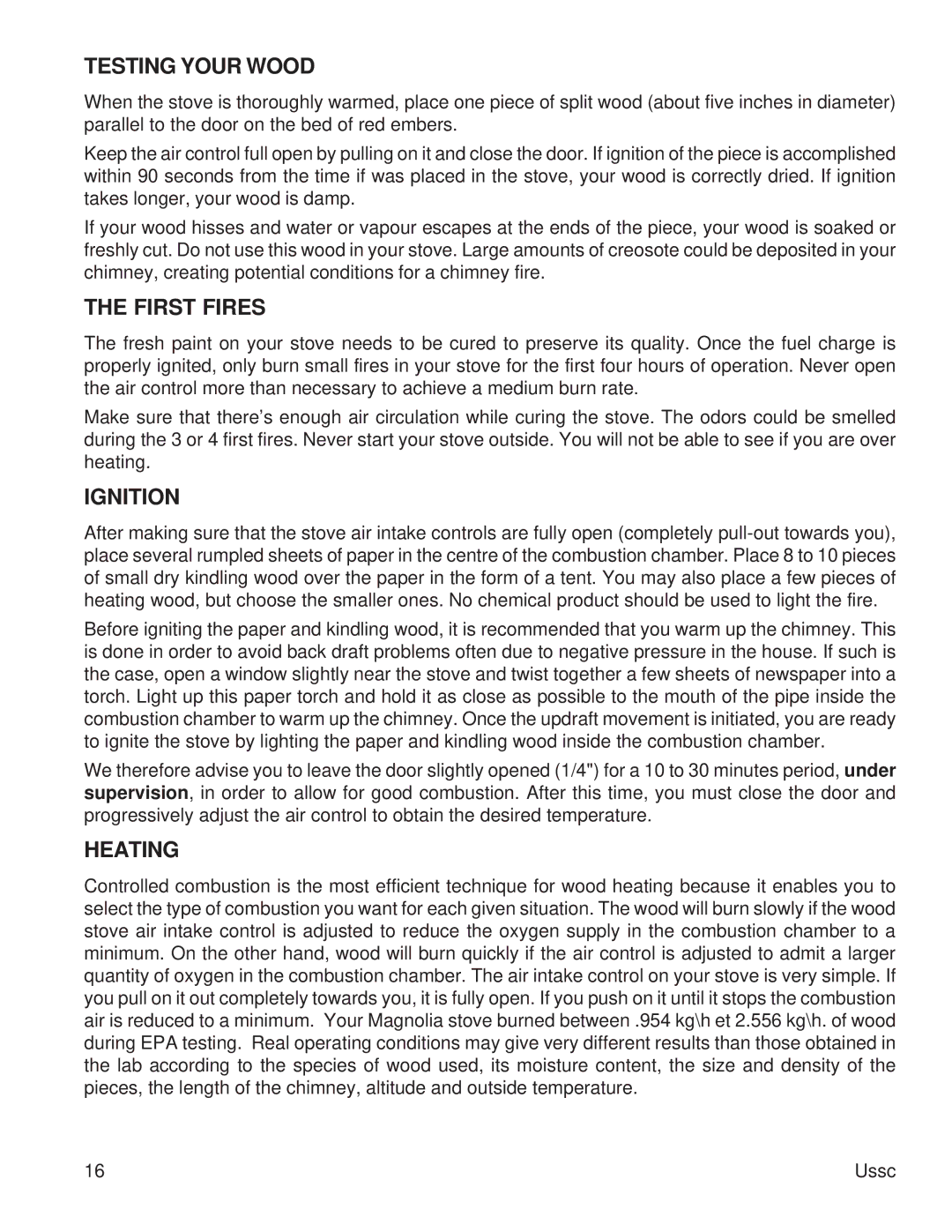2015 specifications
United States Stove Company has been a central figure in the heating industry for over 150 years, renowned for its commitment to crafting reliable, efficient, and innovative wood and pellet stoves. In 2015, the company continued to build on its legacy with a range of products that showcased modern technologies while maintaining traditional craftsmanship.One notable feature of United States Stove's 2015 offerings was the integration of advanced combustion technology. This innovation allowed for cleaner burning and improved fuel efficiency, making their stoves more environmentally friendly than ever. By optimizing the combustion process, the stoves reduced emissions, complying with stringent EPA regulations and helping homeowners lower their carbon footprint.
Another key characteristic of their products in 2015 was the use of high-quality materials. United States Stove Company stoves were built with durable cast iron and steel, ensuring longevity and improved heat retention. The robust construction not only contributed to the stoves' durability but also provided a classic aesthetic that appealed to traditional and modern home designs alike.
In terms of user experience, 2015 models were equipped with features that emphasized ease of use and convenience. Many units included adjustable airflow settings, allowing users to control the intensity of the heat output easily. Additionally, several models came with large viewing windows, providing an unobstructed view of the flames, which enhanced the overall ambiance of any living space.
United States Stove also prioritized safety in their designs. Many of the 2015 models were fitted with safety features such as overheat protection systems and heat-resistant door handles. This commitment to safety ensured that users could enjoy the warmth and comfort of their stoves with peace of mind.
Moreover, the adaptability of their products was evident in the variety of models available. From compact units suitable for smaller spaces to larger freestanding models capable of heating expansive areas, United States Stove catered to a wide range of customer needs. This versatility made it easier for homeowners to find a solution that best fit their heating requirements.
In summary, United States Stove Company's 2015 lineup was marked by advanced technologies, durable materials, user-friendly features, and a strong focus on safety. This combination of elements not only reflected the company’s commitment to quality and innovation but also solidified its reputation as a trusted leader in the heating industry for generations to come.
